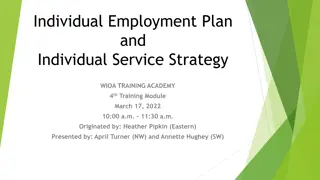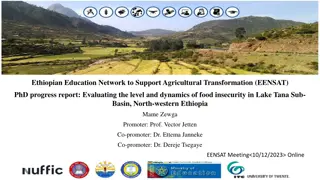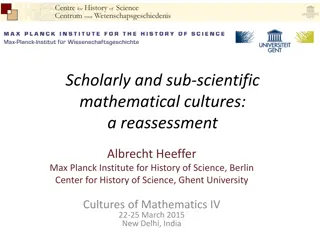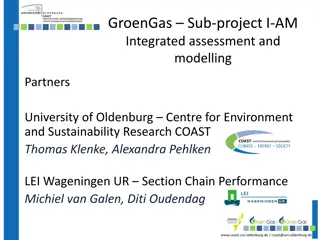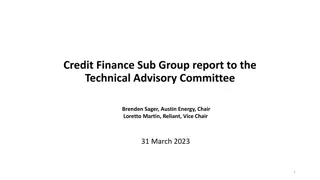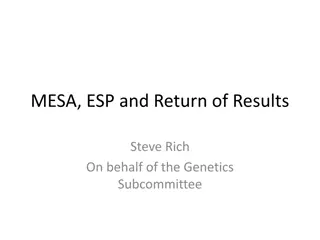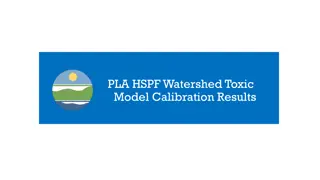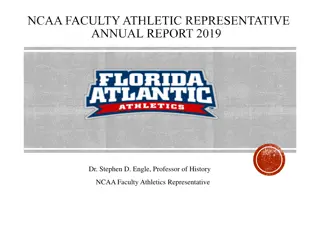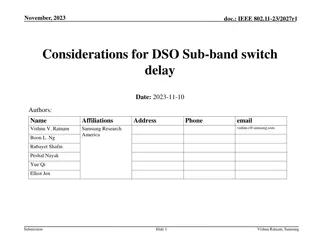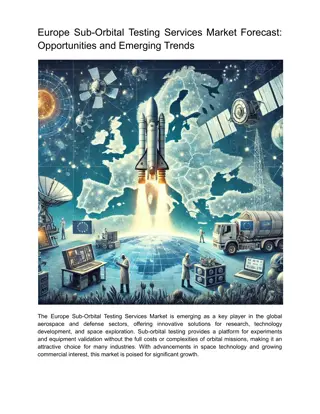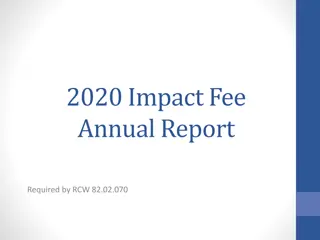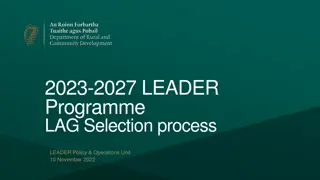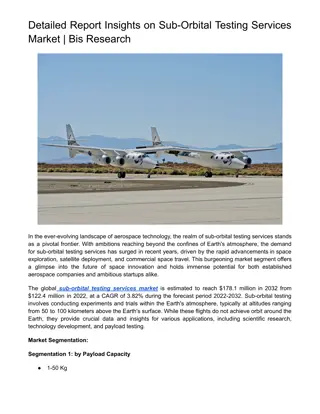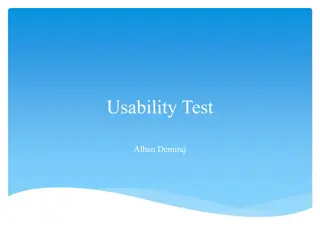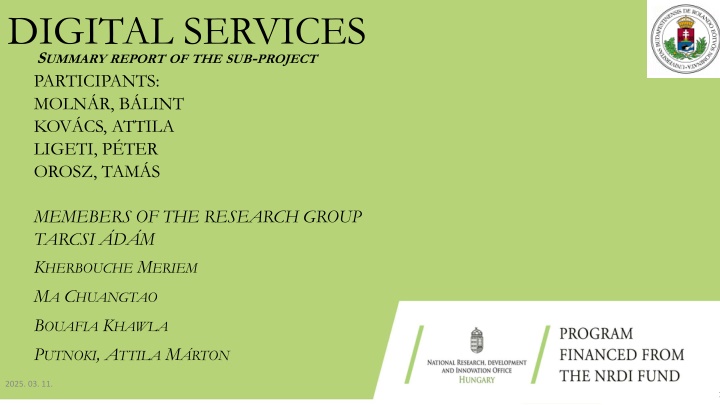
Summary Report of Sub-Project Participants and Major Results 2025
Developing new testing solutions for reliable information systems, cryptographic solutions for industrial IoT devices, and algorithms for enterprise processes. Includes software testing services, investigation on security protocols, and applicability of project results in industrial IoT applications and information systems design.
Download Presentation

Please find below an Image/Link to download the presentation.
The content on the website is provided AS IS for your information and personal use only. It may not be sold, licensed, or shared on other websites without obtaining consent from the author. If you encounter any issues during the download, it is possible that the publisher has removed the file from their server.
You are allowed to download the files provided on this website for personal or commercial use, subject to the condition that they are used lawfully. All files are the property of their respective owners.
The content on the website is provided AS IS for your information and personal use only. It may not be sold, licensed, or shared on other websites without obtaining consent from the author.
E N D
Presentation Transcript
DIGITAL SERVICES SUMMARY REPORT OF THE SUB-PROJECT PARTICIPANTS: MOLN R, B LINT KOV CS, ATTILA LIGETI, P TER OROSZ, TAM S MEMEBERS OF THE RESEARCH GROUP TARCSI D M KHERBOUCHE MERIEM MA CHUANGTAO BOUAFIA KHAWLA PUTNOKI, ATTILA M RTON 2025. 03. 11. 1
Major results Developing new testing solutions to build reliable information systems New cryptographic solutions for confidential communication of industrial IoT devices New algorithm to ensure consistency and integrity of enterprise dynamic processes 2025. 03. 11. 2
Software testing as a service Software testing as a service More efficient test design methods www.test-design.org, Training: General predicate testing Advantage: can be automated, cheap, finds all borderline errors Action-state testing Advantage: automatable, cheap, generalisation of traditional finite automata and user-case models Performance testing effective integration into STLC 2025. 03. 11. 3
Investigation Investigation security security protocols protocols Research on grid-based algorithms: Post-quantum cryptography Numsys (http://numsys.info ) Data compression Primes and sequences for cryptography Service: Privacy-preserving password cracking 2025. 03. 11. 4
Applicability of the sub-project results Increasing the effectiveness and efficiency of testing Possibility of fine-grained confidentiality sharing for enterprise/institutional deployment of distributed systems For industrial IoT applications, achieving higher levels of information security. In the case of information systems design, additions and extensions projects, enhancing the flexibility of project time and resource planning. Maintaining the consistency, integrity and information security of changes when making ad hoc, dynamic changes to business information systems processes. 2025. 03. 11. 5
Information security applications in distributed networks Security in distributed storage Secret sharing mechanisms Combinatorial solutions - optimal graph-based systems Geometric solutions - efficient designs for sophisticated access control Security in distributed computing IoT/ IIoT network applications distributed protocols for location Decentralised allocation of network addresses Attribute-based communication protocols Cooperation with a German university in an industrial application environment. Implementation of secure communication for industrial sensors and controllers in manufacturing
Evaluation and assessment of information system services Measuring software functionality: different methods are available to measure the functional size of applications. For UML models, the Use Case Point method can be used to automate processes. If the complete documentation is available, the function point analysis can be used to obtain results. Software cost estimation techniques: Functional Points (FP), Cosmic, SLOC (lines of code), Use Case Points (UCP).FSM (Functional Size Measurement): to determine the size of software by quantifying the set of functions provided to users. Function Point Analysis (FPA) was the first FSM method.Translated with www.DeepL.com/Translator (free version) Industrial application: streamlining project planning tasks for enterprise information systems development projects
Objective: to ensure the sustainable, innovative development of business information systems Methodology: optimising ERP system solutions by synthesising innovation and sustainability Applied solutions: Introducing the latest methods, tools and technologies on the farm, in projects with the right weight, place and time. 3/11/2025 8
Use of graph theoretic approaches for modelling dynamically changing corporate/institutional processes, integrity checking Simulated BP data generation Transfer generated data to even graph Convert BP data to hypergraph Application of Smith Normal Formula Recognition of quasi-isomorphic graphs that are similar for the purpose of the study Similarity metrics Homology of groups, using invariants Recognizing problems, e.g. Betti number The graph/hypergraph must encode the phenomena in order for mathematical approaches to be applicable. 2025. 03. 11. 9
Results so far Automatic way to generate simulated business process data with dedicated functions Automatic way to display generated data for hypergraphs and even graph implementations. Smith normal form can be used to discover similar business process within the generated data. A thorough knowledge of the business/organizational process domain is required to generate the data. 2025. 03. 11. 10
Application of model-to-program generation in financial IT From model to program and the usability of blockchain approaches in business and workflows Combining business processes, workflows and blockchain technologies for financial services technologies Exploring the potential of blockchain applications in enterprise process management and modelling. In model checking to ensure consistency, integrity and security in a dynamically changing business environment. Through three case studies, we will examine the application of blockchain technology in the financial sector, developing a unified view of the business process modelling approach used in the industry. Our case studies aim to integrate the application of blockchain into enterprise/business process modelling. 2025. 03. 11. 11
M2P application opportunities On the one hand, model checking for the further development of old, obsolete or possibly new systems Code, program, outline, preparation.... Financial Services Technologies Program generation from activity diagrams of financial institution processes that use blockchain technology for financial transactions. Search for process patterns, customize, align with blockchain technology to generate. Insurance institutions and their processes (possibly banking applications) 2025. 03. 11. 12
(Semi (Semi- -)automatic semantic consistency checking method for learning )automatic semantic consistency checking method for learning ontologies from relational database schemas ontologies from relational database schemas Development of a (semi-)automatic semantic consistency checking method based on a transition graph, intermediate representation and model checking to check semantic consistency during ontology learning from RDB. Software experiments have shown that this method can correctly check and return the result whether the given semantic specification of the learned ontology matches the original RDB. Knowledge-enhanced schema mapping We examined the framework of ontology learning and knowledge-enhanced schema mapping, and analysed the flexibility of using these approaches and knowledge bases in data integration. We conducted a preliminary case study to illustrate how knowledge-enriched schema mapping can be used to migrate and integrate legacy health information systems.
Application opportunities Transformation of obsolete, old , information systems database schemas, ontologies In the case of Health Systems Adaptation of available Hungarian e- health applications to allow data analysis in line with international standards (OMOP CDM MEDSOL). Observational Health Data Sciences supporting diagnostic medicine applications with data science methods in line with international standards A Technical Report on the software experiments carried out so far has been prepared Journal publications published IEEE conference publication published EIT project: e-Health application systems 2025. 03. 11. 14
Major publications M. Gyarmati, P. Ligeti, P. Sziklai: On the information ratio of graphs without high-degree neighbours, Discrete Applied Mathematics, 2021 M. Kamel, P. Ligeti, . Nagy, C. Reich: Distributed Address Table (DAT): A Decentralized Model for End-to-End Communication in IoT, Peer-to-Peer Networking and Applications, 2021 Ma, C. & Moln r, B. & Bencz r, A. A Semi-Automatic Semantic Consistency-Checking Method for Learning Ontology from Relational Database. Information, 2021, 12(5):188. Journal Rank: CiteScore - Q2 Chuangtao, Ma and B lint, Moln r and d m, Tarcsi and Andr s, Bencz r, Knowledge Enriched Schema Matching Framework for Heterogeneous Data Integration, 2022 IEEE 2nd Conference on Information Technology and Data Science, CITDS 2022, 2022 Bouafia Khawla, Investigation of Modelling of Dynamic Business Processes, Ph.D. dolgozat K. Bouafia and B. Moln r, Hypergraph Application on Dynamic Aspect of Business Process Performance Analysis, MDPI Information, vol. 12, no. 9, Art. no. 9, Sep. 2021, doi: 10.3390/info12090370. (CiteScore - Q2 (Information Systems) D. Mattyasovszky-Philipp, A. M. Putnoki, and B. Moln r, The Unrepeatable Human Mind Challenges in the Development of Cognitive Information Systems What Makes a Machine Human?, Electronics, vol. 11, Art. no. 3, Jan. 2022, doi: 10.3390/electronics11030394. Journal Rank: CiteScore - Q2 (Electrical and Electronic Engineering) 2025. 03. 11. 15
Thank you for your attention Questions? 2025. 03. 11. 16

